Introduction
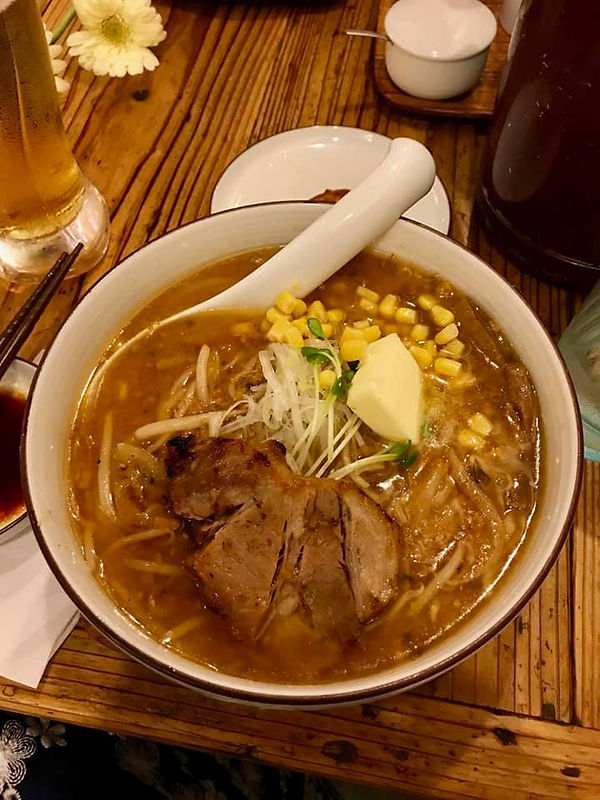
In the world of Asian noodle soups, Ramyun and Ramen stand out as popular favorites. Ramyun refers specifically to the Korean style of instant noodles, while Ramen is a classic Japanese dish that has made its mark on Korean cuisine. Although they share similarities, such as their comforting and flavorful broths, there are distinct differences between the two. From their origins and cultural significance to their ingredients and toppings, this article will delve into the battle of Ramyun vs Ramen, exploring their unique characteristics and discussing the preferences of noodle soup lovers everywhere.
Background On Ramyun And Ramen
Ramyun and Ramen are both beloved Asian noodle soups with their own unique characteristics. Ramyun, specifically the Korean style, is often associated with instant noodles or cup noodles that are convenient and easy to prepare. It has gained popularity and is consumed widely in Korea and beyond. On the other hand, Ramen, originating from Japan, is a type of noodle made from wheat and is commonly served with various toppings and flavorful broths. While Ramen is traditionally made from scratch and slow-cooked, instant Ramen has become increasingly popular. Both Ramyun and Ramen offer a comforting and satisfying meal option for noodle lovers.
History And Cultural Significance Of Both Noodle Soups
Both Ramyun and Ramen have a rich history and cultural significance in their respective countries. Ramen originated in Japan in the late 19th century and has since become a staple in Japanese cuisine. It is often associated with a sense of nostalgia and is considered a comfort food. Ramen has also gained international popularity and is now enjoyed worldwide.
Ramyun, on the other hand, has a shorter history but holds great importance in Korean culture. It emerged in the mid-20th century and quickly became a popular snack among students and workers. Ramyun symbolizes convenience and affordability, making it a go-to meal for many Koreans. It has even been featured in Korean entertainment, further cementing its cultural significance.
Ramyun: The Spicy Korean Noodle Soup
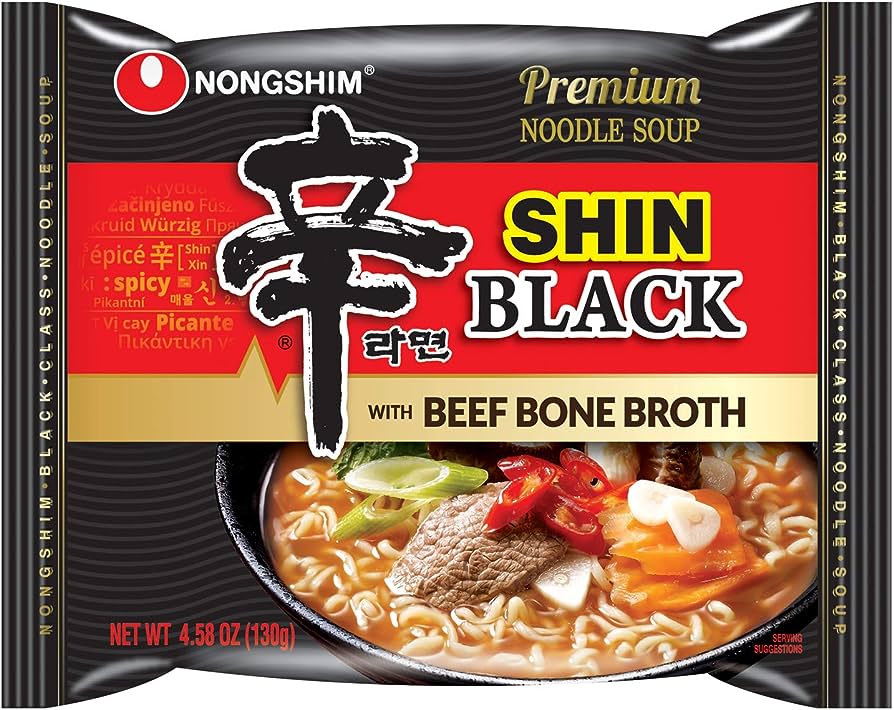
Ramyun, also known as ramyeon, is a popular and spicy Korean noodle soup. It is characterized by its bold and robust flavors, with a spicy kick that sets it apart from other noodle dishes. Ramyun originated in Korea in the mid-20th century and quickly gained popularity as a convenient and affordable meal. It is often enjoyed as a quick and satisfying snack, especially by students and workers. With its fiery broth, chewy noodles, and various toppings, Ramyun offers a delicious and comforting dining experience for those who appreciate a little heat in their noodles.
Characteristics And Origins Of Ramyun
Ramyun is a spicy Korean noodle soup known for its bold and robust flavors. It originated in Korea in the mid-20th century and quickly gained popularity as a convenient and affordable meal option. Ramyun is characterized by its fiery broth, chewy noodles, and various toppings such as vegetables, meat, and eggs. It stands out from other noodle soups with its intense spiciness, making it a preferred choice for those who enjoy a little heat in their dishes. Ramyun has become a staple in Korean cuisine and is often enjoyed as a quick and satisfying snack.
Popular Ramyun Brands And Flavors
Some popular Ramyun brands in Korea include Nongshim, Ottogi, Samyang, and Paldo. Each brand offers a variety of flavors to cater to different preferences. Some common flavors include spicy beef, kimchi, seafood, and vegetable. These flavors are created using a combination of seasoning packets that add depth and richness to the soup. Some brands even offer limited edition flavors or collaborations with famous Korean dishes to further enhance the taste. The wide range of flavors available ensures that there is a Ramyun option for everyone to enjoy.
Ramyun Vs Ramen: Ingredients And Broth
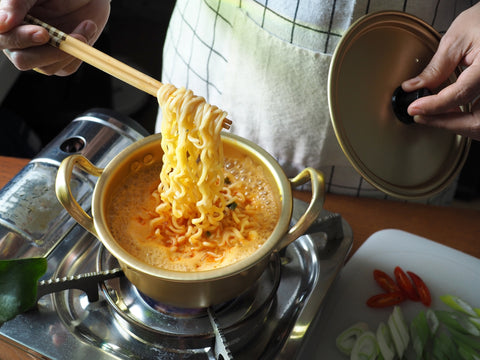
Ramyun and Ramen differ not only in their cooking methods but also in their ingredients and broth. Ramyun, the Korean version of instant noodles, typically uses a spicy broth made with flavors like beef, kimchi, seafood, or vegetable. The soup is known for its bold and fiery taste. On the other hand, Ramen, the classic Japanese noodle soup, can be prepared with chicken, beef, or pork broth, resulting in a savory and umami-rich flavor profile. The choice of ingredients and the complexity of the broth contribute to the distinct tastes of these Asian noodle soups.
Key Ingredients In Ramyun And Ramen
Ramyun and Ramen feature distinct sets of ingredients that contribute to their unique flavors and profiles. In Ramyun, common ingredients include noodles, spicy seasoning packets, and various toppings like dried seaweed, green onions, and eggs. The broth is typically made with a spicy base such as gochujang or kimchi, along with additional flavors like beef, seafood, or vegetables. On the other hand, Ramen often includes noodles, a rich broth made from chicken, beef, or pork, and toppings such as sliced pork, bamboo shoots, nori, and soft-boiled eggs. The choice of ingredients plays a crucial role in defining the taste and character of each noodle soup.
Comparison Of Cooking Methods And Broth Flavors
When it comes to cooking methods, Ramyun and Ramen differ significantly. Ramyun is typically prepared as an instant dish by boiling the noodles and adding the spicy seasoning packet. On the other hand, Ramen is often made from scratch, with fresh noodles that are cooked separately and then added to a flavorful broth.
In terms of broth flavors, Ramyun leans towards spicy and bold flavors, often incorporating gochujang or kimchi as a base along with additional notes of beef, seafood, or vegetables. Ramen, on the other hand, tends to feature a rich and savory broth made from chicken, beef, or pork, with umami flavors taking center stage.
Overall, the cooking methods and broth flavors of Ramyun and Ramen contribute to their distinct profiles and cater to different taste preferences.
Ramen: The Classic Japanese Noodle Soup
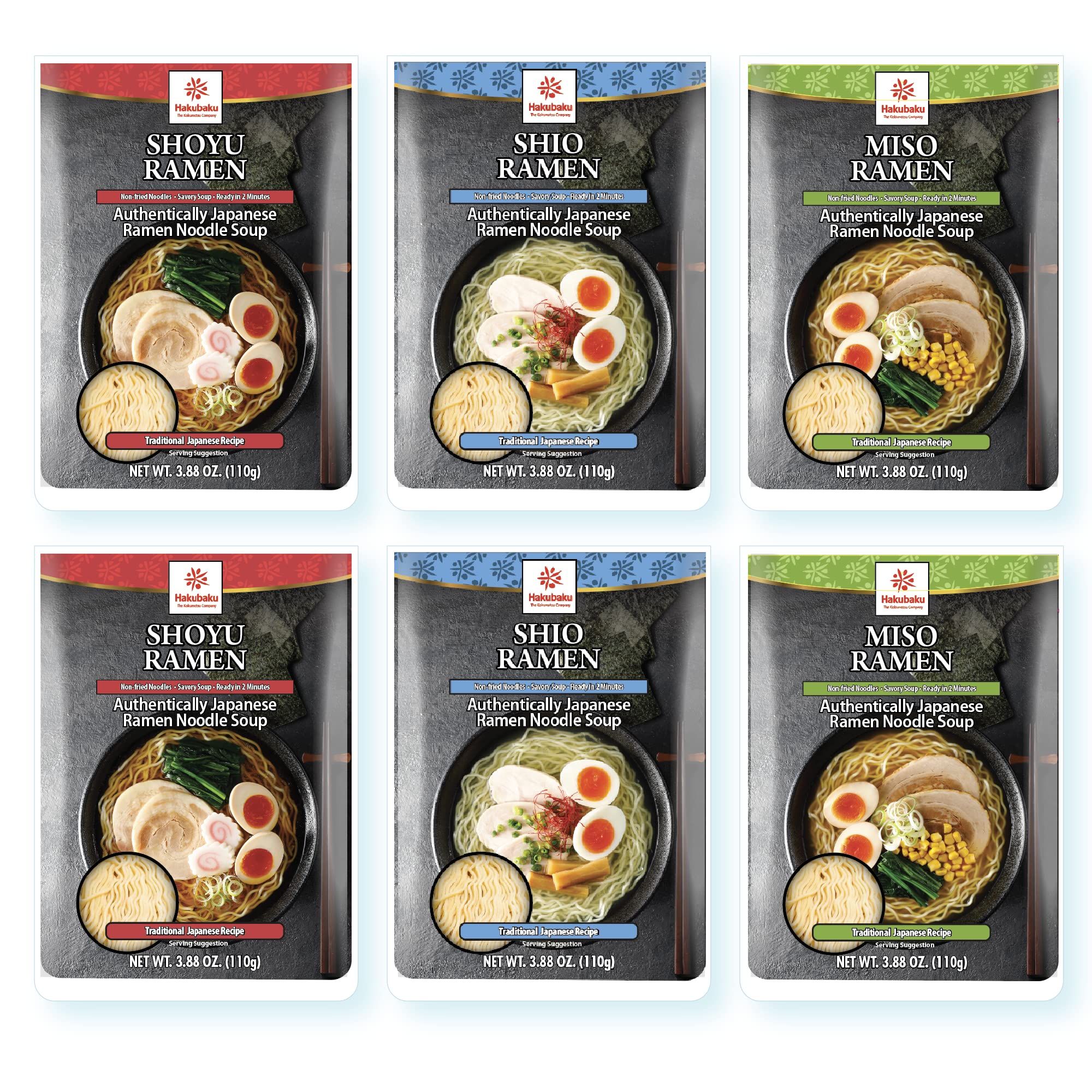
Ramen is a classic Japanese noodle soup that has gained worldwide popularity. Its origins can be traced back to China, where it was brought to Japan in the early 1900s. Ramen is characterized by its flavorful broth made from chicken, pork, or seafood, combined with handmade noodles. There are various styles of ramen, including shoyu (soy sauce), miso (soybean paste), and tonkotsu (pork bone) ramen, each with its own distinct flavors. Regional variations also exist, such as Sapporo-style and Hakata-style ramen. Ramen is often topped with ingredients like sliced pork, green onions, bean sprouts, and soft-boiled eggs, adding layers of texture and flavor to this beloved noodle dish.
Characteristics And Origins Of Ramen
Ramen, the classic Japanese noodle soup, is known for its distinct characteristics and rich history. Originating in China, ramen was introduced to Japan in the early 1900s and quickly gained popularity. The key characteristics of ramen lie in its flavorful broth made from chicken, pork, or seafood, combined with handmade noodles. Different regions in Japan have their own styles of ramen, such as the soy sauce-based shoyu ramen, the savory miso ramen, and the creamy tonkotsu ramen made from pork bones. These variations contribute to the diverse and delicious world of ramen.
Famous Ramen Styles And Regional Variations
Famous Ramen styles and regional variations are an integral part of the diverse world of this classic Japanese noodle soup. Some of the well-known Ramen styles include:
- Shoyu Ramen: This soy sauce-based Ramen originates from Tokyo and features a savory and umami-rich broth.
- Miso Ramen: Hailing from Hokkaido, Miso Ramen incorporates a fermented soybean paste called miso, resulting in a robust and hearty flavor.
- Tonkotsu Ramen: Originating from Kyushu, this style is renowned for its creamy and pork-based broth, cooked for hours to extract maximum flavor.
- Sapporo-style Ramen: From the city of Sapporo, this Ramen features thick, curly noodles in a miso-based broth with butter and corn.
Each region in Japan has its own distinct style of Ramen, resulting in an extensive variety to tantalize taste buds.
Ramyun Vs Ramen: Noodle And Toppings

When it comes to noodles and toppings, both Ramyun and Ramen offer a wide range of choices to satisfy your cravings.
In Ramyun, the noodles are typically thicker and chewier, providing a satisfying bite. On the other hand, Ramen noodles are thinner and have a lighter texture.
As for toppings, Ramyun often includes ingredients such as Korean kimchi, sliced green onions, and beef or pork. Ramen, on the other hand, features classic toppings like sliced chashu pork, seaweed, bamboo shoots, and a perfectly cooked soft-boiled egg.
Ultimately, the choice of noodle and toppings depends on personal preferences and the desired flavor profile.
Varieties Of Noodles Used In Ramyun And Ramen
Ramyun and Ramen both feature different types of noodles, adding to the unique experience of each soup. In Ramyun, the noodles are typically thicker and chewier, providing a satisfying bite. These noodles are often made from wheat flour and have a dense and springy texture. On the other hand, Ramen noodles are thinner and have a lighter texture. They are made from wheat flour, kansui (alkaline saltwater), and sometimes egg, resulting in a smoother and silkier noodle. The choice of noodles adds to the distinct character and enjoyment of both Ramyun and Ramen.
Common Toppings And Garnishes
Common toppings and garnishes play an important role in enhancing the flavors and textures of both Ramyun and Ramen dishes. Some popular toppings commonly found in Ramyun include thinly sliced green onions, bean sprouts, kimchi, mushrooms, and boiled eggs. These toppings add freshness, crunch, and a burst of flavors to the spicy noodle soup. Ramen, on the other hand, offers a wide range of toppings such as thinly sliced chashu (braised pork), Naruto maki (fish cake), nori (seaweed), soft-boiled eggs, corn, and menma (fermented bamboo shoots). These toppings not only add visual appeal but also contribute to the complexity and richness of the dish. Whether it’s the crunchy texture of vegetables or the melt-in-your-mouth chashu, these toppings and garnishes elevate the eating experience of both Ramyun and Ramen.
Conclusion
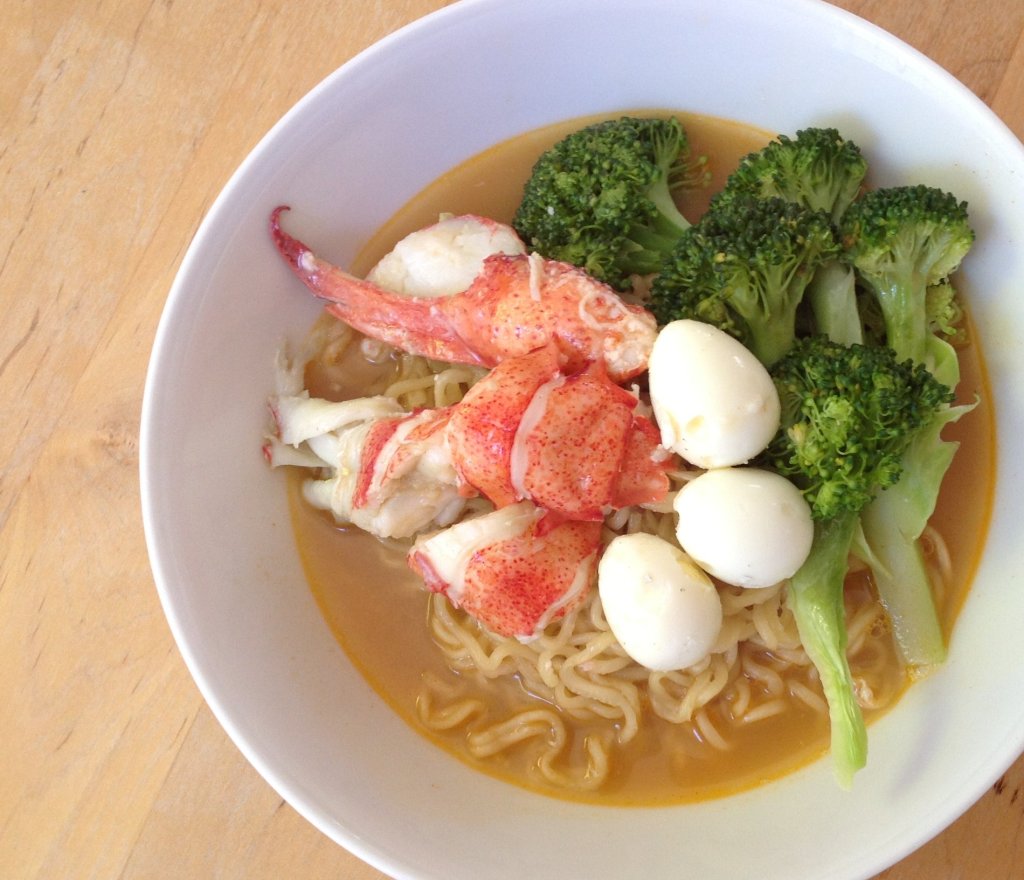
In conclusion, it is evident that Ramyun and Ramen are two distinct noodle dishes with their own unique characteristics and flavors. Ramen, originating from Japan, is known for its handmade noodles and rich, complex broth. On the other hand, Ramyun, a spicy Korean adaptation, offers instant satisfaction with its bold and fiery flavors. Ultimately, the choice between Ramyun and Ramen comes down to personal preference. Whether you prefer the intricate flavors of Ramen or the instant satisfaction of Ramyun, both dishes offer a delightful and fulfilling experience for noodle lovers.
Summary Of Differences Between Ramyun And Ramen
Ramyun and Ramen may both be Asian noodle soups, but they have distinct differences. Ramyun, originating from Korea, is known for its spiciness and instant preparation. It features a fiery broth and often includes spicy toppings like kimchi. On the other hand, Ramen, originating from Japan, is typically made with fresh ingredients and has a savory umami flavor. It offers a variety of regional styles and toppings. The main differences lie in the cooking methods, flavors, and ingredients used. Whether one prefers the bold and instant satisfaction of Ramyun or the complex flavors of Ramen, both noodle soups have their own unique appeal.
Personal Preferences And Final Thoughts
When it comes to personal preferences, some individuals may gravitate towards the bold and fiery flavors of Ramyun, while others may prefer the complex and umami-rich taste of Ramen. The choice ultimately depends on one’s spice tolerance and flavor preferences. Both Ramyun and Ramen offer a comforting and satisfying bowl of noodles, each with its own unique characteristics. Whether it’s the instant gratification of Ramyun or the depth of flavors found in Ramen, both noodle soups have their own devoted fans. Ultimately, exploring and experiencing both dishes will allow one to appreciate the wonders of Asian noodle culture.
Frequently Asked Questions: Ramyun vs. Ramen
Q: What is the difference between ramyun and ramen?
A: Ramyun and ramen are both types of noodle dishes, originating from Korea and Japan respectively. While they share similarities, there are a few key differences that differentiate them.
Q: How are the noodles in ramyun and ramen different?
A: The noodles in ramyun and ramen differ in terms of thickness, chewiness, and cooking time. Ramen noodles are typically thinner, softer, and cook quickly. On the other hand, ramyun noodles are thicker, more chewy, and often require a longer cooking time.
Q: What about the broth? Are there any variations?
A: The broth is where the main distinction lies between ramyun and ramen. Ramyun is known for its bold and spicy flavors, often accompanied by a rich and savory broth made with a variety of seasonings, including chili, garlic, and soy sauce. Ramen, on the other hand, offers a wider range of flavors, such as miso, soy sauce, and tonkotsu (pork bone).
Q: Are there any differences in toppings and ingredients?
A: Yes, there are variations in toppings and ingredients used in ramyun and ramen. Both dishes can include ingredients like sliced pork, green onions, seaweed, and a soft-boiled egg. However, ramen offers more variety and flexibility when it comes to adding toppings like bamboo shoots, bean sprouts, fish cake, or corn. Ramyun often contains additional elements like slices of sausage, kimchi, or vegetables.
Q: Is there a difference in preparation methods?
A: The basic cooking process for both ramyun and ramen is similar. However, ramyum often involves cooking the noodles and ingredients in the broth, while ramen traditionally relies on boiling the noodles separately and then placing them in the bowl, topped with the broth and other ingredients.
Q: Which one is considered spicier?
A: Ramyun is generally considered spicier than ramen. The spiciness in ramyun comes from the addition of chili powder or sauce, making it a popular choice for those who enjoy a fiery kick in their noodles.
Q: Can I find ramyun and ramen globally?
A: Both ramyun and ramen have gained international popularity over the years. Ramen, in particular, can be found in various countries worldwide. Ramyun is more common in Korean-influenced regions, but it is often available in Asian supermarkets or specialty stores globally.
Q: Which one should I try first, ramyun or ramen?
A: It ultimately depends on your personal taste preferences. If you enjoy spicier, bolder flavors, ramyun could be an excellent starting point. On the other hand, if you are looking for more diverse flavor profiles and a wider range of options, ramen might be a better choice. Why not try both and see which one you prefer?
In conclusion, while ramyun and ramen share similarities as noodle dishes, they differ in terms of noodle thickness, broth flavor variety, spiciness levels, and ingredients. Exploring both can be a delightful culinary adventure, offering unique tastes from Korean and Japanese cuisine!
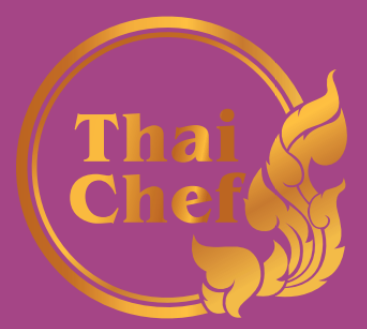
We are a small takeaway restaurant offering a great selection of food cooked by our Thai chef. Table spaces are limited, so please book in advance.